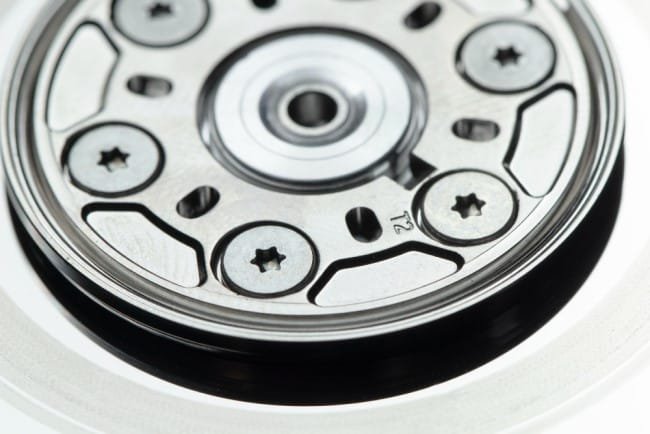Choosing the right gasket for leak prevention in your system isn’t as straightforward as picking up the first one you come across. If you’ve ever experienced a leak in a pipe, valve, or joint, you know it can be more than just a nuisance. It can lead to costly repairs, downtime, and, in some cases, dangerous situations. So, how do you ensure that you pick the right gasket for your system?
Understanding Your System’s Requirements
Before diving into material types or sizes, you need to understand your system’s specifics. This includes factors like temperature, pressure, and the types of fluids or gases involved. A gasket that works perfectly in one system could fail miserably in another if you don’t match it to the right conditions.
- Temperature: Will the gasket be exposed to high heat, freezing conditions, or fluctuating temperatures? Gaskets are made from different materials, each designed to withstand specific temperature ranges.
- Pressure: Are we talking about low-pressure water systems or high-pressure steam lines? Higher pressure generally means you need a gasket made from stronger materials to prevent leaks.
- Fluid or gas type: Different materials interact with fluids and gases in various ways. Some materials are resistant to chemicals and oils, while others may degrade quickly when exposed to certain substances.
Material Selection
Now that you know the basic requirements of your system, it’s time to dive into materials. Leak prevention gaskets are available in a wide range of materials, each offering its own set of benefits and drawbacks. The key is selecting the right one based on what your system demands. Let’s look at some common types:
- Rubber: Rubber gaskets are flexible and durable. They’re ideal for systems with low pressure and temperatures but may not hold up well under extreme conditions. They’re also great for water, air, and some chemical applications.
- Metallic: Metallic gaskets are tough and durable, making them a good choice for high-pressure and high-temperature environments. However, they’re more rigid and might not suit systems that need flexibility.
- PTFE (Teflon): This is a strong contender for systems dealing with aggressive chemicals, oils, or extreme temperatures. PTFE gaskets are known for their chemical resistance and durability, making them a versatile choice. While they might not be necessary for every system, they can be an excellent option if you’re looking for something that can withstand challenging conditions.
The Importance of Proper Sizing
A gasket that doesn’t fit properly is no better than having no gasket at all. Sizing is critical, and the last thing you want is to install one that’s too large or too small. Always ensure the gasket’s size matches your system’s specifications exactly. Measure your flanges or the spaces where the gasket will be seated carefully.
Don’t assume a one-size-fits-all approach will work here. Gaskets are precision items, and even small size mismatches can result in leaks or gasket blowout.
Installation Matters
Selecting the perfect gasket isn’t enough if it’s installed incorrectly. An improper installation can lead to immediate leaks or a gradual degradation over time. When installing, make sure to:
- Clean the surfaces before placing the gasket. Any dirt, debris, or rust can prevent a proper seal.
- Tighten the bolts evenly. Uneven bolt tightening can put pressure on one side of the gasket, causing it to wear unevenly or blow out.
- Use a torque wrench to ensure the proper amount of force is applied. Over-tightening or under-tightening can cause issues down the line.
Consider the Lifespan of Your Gasket
No gasket lasts forever, but some will last longer than others, depending on the material, system conditions, and maintenance. If your system operates under extreme conditions, like high temperature or pressure, you might need to replace your gaskets more frequently.
For systems that don’t undergo much stress, you might be able to get more life out of your gasket. Either way, it’s smart to establish a maintenance schedule that includes regular gasket checks to catch any issues before they lead to major problems.
When to Replace Your Gaskets
Even if your system appears to be running smoothly, gaskets degrade over time. Regular inspections will help you catch any potential issues before they turn into bigger problems. Some tell-tale signs that it’s time to replace your gaskets include:
- Visible cracks or warping
- Leaks around joints or flanges
- A noticeable decrease in system efficiency
- Unusual system noises, like hissing or whistling
If you notice any of these signs, don’t wait for a full system failure. Replacing the gasket sooner rather than later can save you time, money, and hassle.
Matching the Gasket to the Application
It’s crucial to ensure that the gasket you choose matches not only the type of system but also the specific application. Different industries have different needs, and the gasket requirements for a chemical plant will differ from those of a food processing facility.
For example, if you’re working with high-purity applications like pharmaceuticals or food production, you’ll need a gasket that’s not only leak-proof but also sanitary and easy to clean. On the other hand, industrial or heavy-duty applications may prioritize durability and pressure resistance over other factors.
Final Thoughts
Choosing the right leak prevention gasket might seem like a daunting task, but when you break it down into the key elements — system requirements, material selection, proper sizing, and installation — it becomes much more manageable. The most important thing is to be aware of your system’s needs and ensure you match those to the gasket’s capabilities.
With the right gasket in place, you’ll avoid costly leaks and keep your system running smoothly. Whether it’s rubber, metallic, or PTFE, making an informed choice will help you achieve long-term efficiency and reliability.
